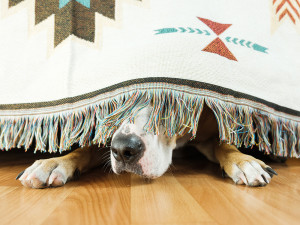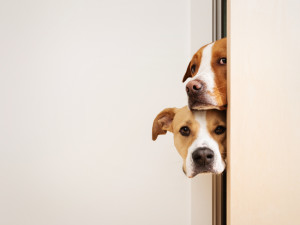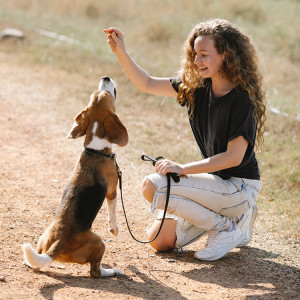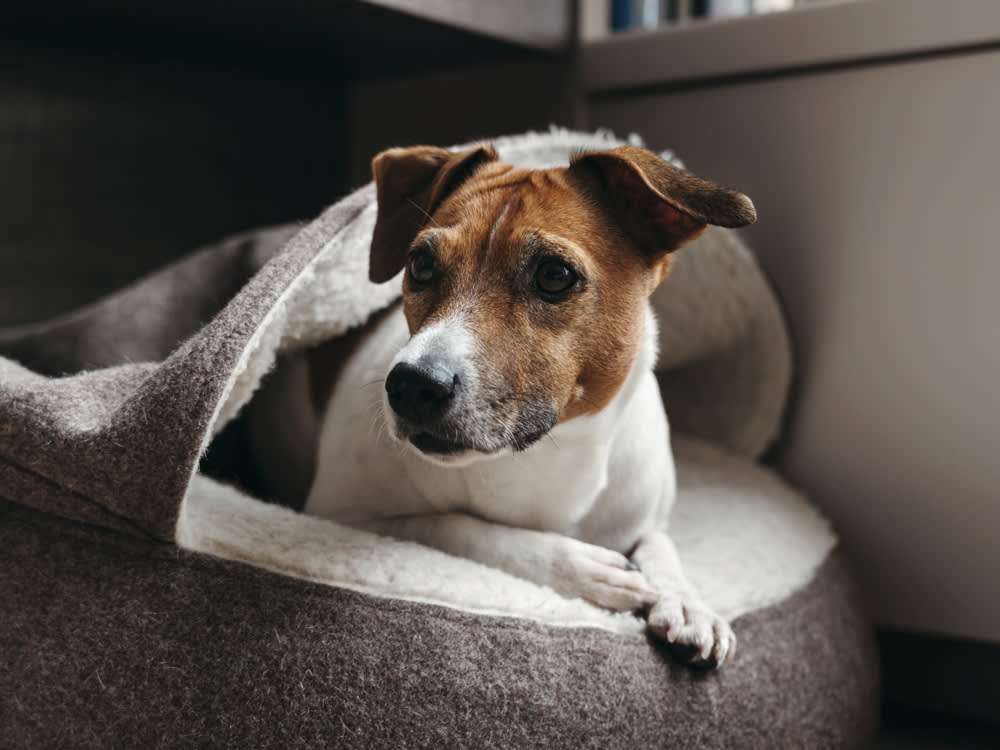
Share Article
As pet parents, many of us know what comes after the lightning during a storm: absolute terror in our dogs as they anticipate the thunder. That terror can take the shape of trembling, hiding under the coffee table, howling and other expressions of doggy dread. And who knows what happens when we’re not home and a sudden thunderstorm descends (the horror!).
For many dogs, storms bring panic and fear. Sometimes this fear even extends to the precursors to thunder, like dark skies, lightning or changes in barometric pressure. We totally understand the loud BOOMs can be scary, but is there something else that our canines are reacting to? Experts hypothesise that some dogs are particularly sensitive to noise; another explanation is that the storms can cause static buildup in their fur that causes a shock sensation.
Understanding the fear
Nancy Dreschel, DVM, an associate teaching professor at PennState, published a studyopens in new tab on the reactions of thunderstorm phobic dogs. She investigated the common stress signs of dogs during thunderstorms, including pacing, salivating, panting, trembling, whining, hiding and increased salivary cortisol levels.
The small study found having a sympathetic owner does not lower the stress reaction of dogs that become anxious or fearful during noisy thunderstorms. But dogs who live with other dogs were more likely to have less pronounced stress reactions and more rapid recovery than dogs in single-dog households. That’s good news for dogs living in multi-dog homes. But Dr Dreschel cautions pet parents of dogs with thunderstorm anxiety against getting additional dogs.
Even though it seems that comfort from humans (like stroking and speaking calmly) didn’t lower stress levels, Dr Dreschel found that dogs would still seek this comfort. “Many of the dogs in our study (both those who lived with other dogs and those who were the only dog) sought out this type of comforting from their human companions.”
Tips for soothing your dog during a storm
So what can you do to help comfort your fearful pup before and during a thunderstorm? “For dogs with thunderstorm phobia… offering a safe place to go (covered crate, room with no windows, etc), behaviour modification (counter-conditioning and desensitisation), pheromone therapy and anti-anxiety medication,” Dr Dreschel suggests.
Comfort your pup
You know best what helps your pup calm down: stroking them, praising them, scratching their favourite spot under their chin. Some pups respond positively when you play soothing music.
Cancel the noise out
You can try drowning out the sound with the TV (DogTVopens in new tab has special programming for pups) or a fan – there are even canine noise-reducing headphonesopens in new tab to muffle storm noises.
Distract them
Plan to be home if you know a storm is coming so you can keep your pup occupied with their favourite tug toy or by filling a Kong with their favourite treats. Make sure your pup gets some exercise, too, to get rid of that anxious energy.
Consider a Thundershirt
Humans joke about these things, but they really can help: the Thundershirtopens in new tab or Karmaopens in new tab Wrap opens in new tab are the equivalent of swaddling your pup like a baby, applying gentle pressure to calm their nerves.
If your dog really struggles with thunder, the PDSA recommendsopens in new tab getting professional help from an behaviourist. “Fears tend to get worse over time and if you wait too long your dog’s behaviour will often become more and more extreme.” They suggest choosing a practioner accredited by the Animal Behaviour & Training Councilopens in new tab (ABTC).
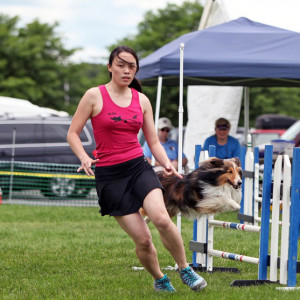
JoAnna Lou
JoAnna Lou is a New York City-based researcher, writer and agility enthusiast.
Related articles
![Pet parent comforting anxious dog by holding their paw]()
8 Tips for Helping an Anxious Dog
Easy ways to calm your pup’s nerves
![Puppy hides under the couch in fear]()
How to Keep Your Dog From Freaking Out When You Have Company
Do these things to help your pup (and your guests) feel chill
![Dog hiding under the sofa and afraid to go out because he heard fireworks.]()
Why Are Dogs Scared of Fireworks?
How to keep your dog mentally and physically safe this Bonfire Night
![Two fearful adolescent dogs peeking through a slightly open door]()
Does Your Dog Have Juvenile Onset Shyness?
Turns out, the teenage years aren’t just tough for humans – they can be rough on dogs, too
![Female dog trainer raising a treat above a beagle dog's head]()
Your Dog’s Trauma Triggers Are Everywhere. Fear Free Training Can Help
The founder of Fear Free Pets, Dr Marty Becker, on how this method makes vet visits, training sessions and grooming appointments less stressful for pets



